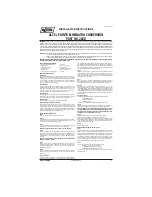
Tire Size
Cold Tire Pressure
for Normal Driving
Front:
Rear:
The compact spare tire pressure is:
For convenience, the recommended
tire sizes and cold air pressures are
on a label on the driver’s doorjamb.
For additional technical information,
see page
.
Use a gauge to measure the air
pressure at least once a month. Even
tires that are in good condition may
lose one to two psi (10 to 20 kPa, 0.1
to 0.2 kgf/cm ) per month.
Remember to check the spare tire at
the same time.
Check the pressure in the tires when
they are cold. This means the vehicle
has been parked for at least three
hours, or driven less than 1 mile (1.6
km).
Add or release air, if needed, to
match the recommended cold tire
pressures on this page.
If you check the pressure when the
tires are hot [driven for several miles
(kilometers)], you will see readings
4
to 6 psi (30 to 40 kPa, 0.3 to 0.4
kgf/cm ) higher than the cold
reading. This is normal; do not
release air to match the cold
pressure.
Tubeless tires have some ability to
self-seal if they are punctured. You
should look closely for punctures if a
tire starts losing pressure.
You should get your own tire
pressure gauge and use it whenever
you check your tire pressures. This
will make it easier for you to tell if a
pressure loss is due to a tire problem
and not due to a variation between
gauges.
196
Tires
Maintenance
155
P165/65R14 78S
38 psi (260 kPa)
35 psi (240 kPa)
60 psi (420 kPa)
















































